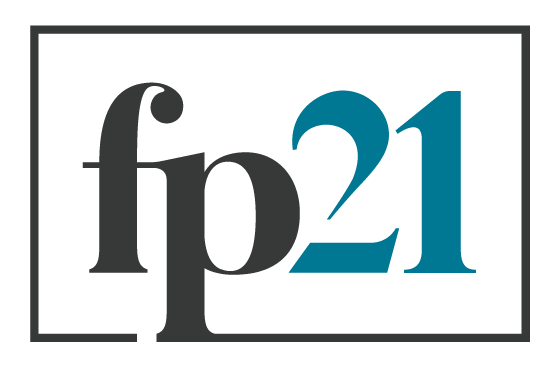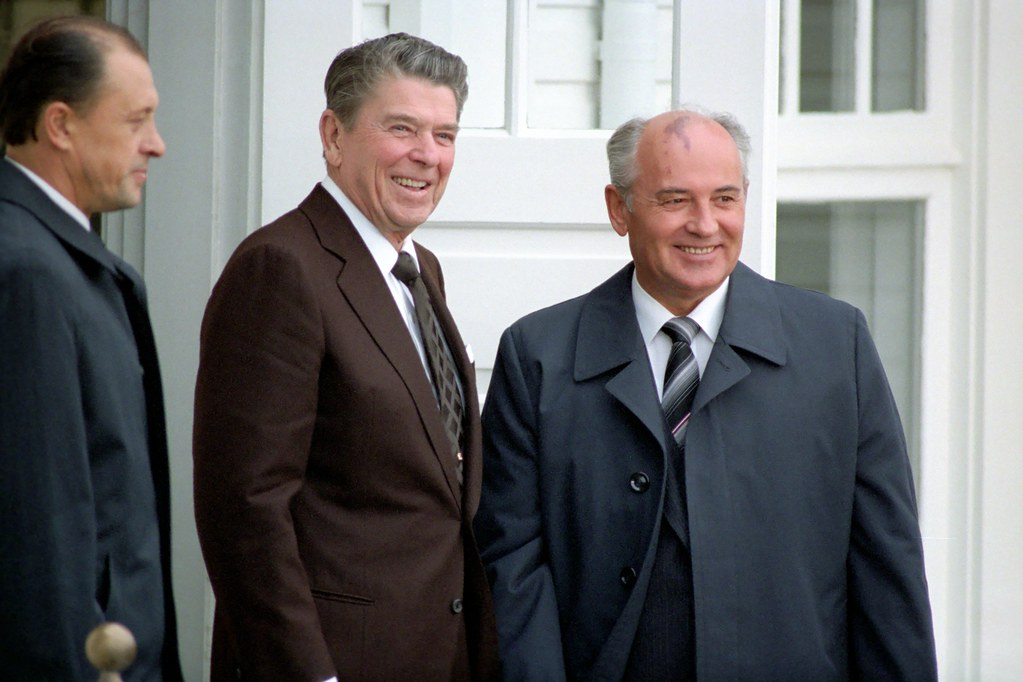Does UNGA Matter? Examining the Research for Face-to-Face Diplomacy
By: Sanjana Patel | September 21, 2023
The end of the Cold War is partly credited to the improbable friendship between U.S. President Ronald Reagan and Soviet leader Mikhail Gorbachev. Reflecting on their relationship, Gorbachev said, “We clearly realized how much the human factor means in international politics.” Photo: "Reagan & Gorbachev Arrive" by The Official CTBTO Photostream is licensed under CC BY 2.0.
After three years of COVID disruptions, the UN General Assembly (UNGA) is back as the largest face-to-face diplomatic gathering in the world. The annual pilgrimage to Turtle Bay is a cornerstone of the United Nations’ mission to provide “the one place on Earth where all the world’s nations can gather together, discuss common problems, and find shared solutions that benefit all of humanity.”
Yet in today’s hyper-connected world, is there any evidence that face-to-face diplomacy matters? Diplomats instinctively say yes, diplomacy requires showing up in person. But can science provide any validation of their beliefs?
Is face-to-face diplomacy merely a symbolic practice, or does it hold unique value to meaningful shape international affairs? This article surveys evidence on the value of face-to-face diplomacy across a range of disciplines.
The Impact of Face-to-Face Meetings on Individuals
The available literature on the intersection of social psychology and political science aims to transfer psychological theories of trust, decision-making, communication, etc., to interpersonal political interactions.
Evidence provided by social neuroscience and psychology asserts that face-to-face communication has unique neural attributes that alternate forms of communication do not possess.¹ Supporters of face-to-face diplomacy have pointed toward these studies to argue that face-to-face diplomatic interactions provide a distinctive signaling mechanism that allows “individuals to actively simulate the specific intentions of others” via our brain’s mirroring system.²
The mirroring system is a complex group of mirror neurons in our brains that facilitate neural synchronization between individuals, allowing them to detect subtle changes in facial expression or shifts in the emotional states of their counterparts.³ Researchers have utilized functional near-infrared spectroscopy (fNIRS) based hyperscanning to examine nodes of the mirror neuron system in the brain as participants communicate through different modalities. They found a significant increase in neural synchronization in face-to-face dialogue in comparison to voice-only dialogue, which demonstrated no significant neural synchronization.⁴ Face-to-face communicating partners were also found to have behaviorally aligned through mimicry of their grammatical choices and body language.⁵
One critique of face-to-face diplomacy is the possibility of misapprehending the political intentions or deception of one’s counterpart since we are incapable of reading minds. Experts of deception detection have argued that the mirroring system may help differentiate between honest and deceptive intentions through emotional mirroring. One study harnessed fMRI technology to scan participants as they viewed videos of actors who picked up boxes and were given the choice to correctly report the weight of the box or deceive. The neuroimaging results found that, when subjects detected deception, there was increased activation in regions of the brain that are known to be triggered by emotional responses and moral conflicts, ultimately suggesting that deception was detected based on the participants' ability to infer the mental state of the actors.⁶
Researchers of political psychology have incorporated this information to understand the outcomes of face-to-face interactions and whether or not they can lead to a positive or a negative social bond between two political leaders or diplomats. By dissecting micro-sociological theories, the scholars Marcus Holmes and Nicholas Wheeler argue that positive social bonds between humans have four “ritual ingredients” or essential conditions, one of which is bodily co-presence, essentially the ability to be face-to-face.⁷ The relationship between Reagan and Gorbachev mentioned in the caption above had all four ingredients for a positive social bond: bodily co-presence, barriers to outsiders, mutual focus of attention, and shared mood.
Additional research would be required in order to make claims about the specific ways face-to-face diplomacy shapes foreign policy outcomes. Would the end of the Soviet Union have proceeded differently if Reagan and Gorbechev never met in person? Holmes and Wheeler have pointed out that “the move to incorporate findings from psychology and social neuroscience as a way to uncover the micro-foundations of political interaction and causal mechanisms of decision-making has lagged behind other disciplines,” but these emerging approaches unlock new avenues of researching face-to-face diplomacy.⁸
Face-to-Face Diplomacy and Public Opinion
State leaders often have incentives to meet beyond the agenda present on the table. Prior to COVID-19, there was an upward trend in diplomatic visits made by U.S. Presidents despite the rise in communication technologies.⁹ This trend suggests that face-to-face visits offer far more than a mere exchange of information that could easily be accomplished over the phone. Recognizing this, political scientists have worked to gauge the significance of face-to-face diplomatic exchanges by assessing their impacts on domestic politics, public opinion, and various other political elements.
One area where these visits have proven significant is in public diplomacy, allowing leaders to spread the soft power of their respective countries. Researchers conducted a comprehensive study analyzing 86 high-level visits by 15 political leaders across nine countries to estimate the causal effect of public diplomacy on the public opinion of foreign citizens.¹⁰ By comparing Gallup World Poll survey data of citizens in host countries before and after a state visit, the study revealed a substantial 2.3 percentage point increase in approval on average of a foreign leader’s job performance. Gaining widespread popularity among foreign citizens is instrumental in enabling leaders to sustain and amplify their global influence. The vast majority of citizens will not literally meet the foreign leader face-to-face, so the results are more likely driven by positive news coverage. Nevertheless, the results suggest that “showing up” is a powerful signal in interstate politics.
In-person diplomacy provides leaders the opportunity to strengthen one another’s position domestically, especially in the face of opposition. Malis and Smith demonstrate this dynamic using a game model where foreign leaders can either visit or not visit an incumbent leader at risk of removal and citizens who can attempt or abstain from removing the incumbent. They test their model using data on 53 years of U.S. presidential visits and find a statistically significant correlation between visits from the U.S. President and/or visits to the U.S. and a leader’s survival in office. This finding supports their theory that foreign leaders visit host leaders that are likely to remain in power and that host leaders are more likely to remain in power if they receive visits.
The insights provided by political science, particularly in the public opinion space, emphasize the value of face-to-face diplomacy as a soft-power signaling mechanism for political strength on both the foreign and domestic stages.
Economic Impacts of Face-to-Face Diplomacy
The state visit of Indian Prime Minister Narendra Modi with President Biden resulted in the successful resolution of six WTO trade disputes and the emergence of several technology-focused trade agreements.¹¹ Their exchange demonstrates the conventional wisdom that you have to meet in person to get deals done. But if the deal was mutually beneficial, why would it take a face-to-face visit to finalize?
The impact of state visits on trade has been a notable area of focus in international political economy research. One study examines the relationship between France’s international trade and 13,207 bilateral visits to and from France between 1977–2007 using a gravity model that relates bilateral trade, bilateral trade costs, and multilateral trade resistances. The study revealed an 8% increase in French exports with the occurrence of a visit abroad by a French official.¹² Moreover, the study highlighted that visits have a more significant impact on exports of differentiated products, which are particularly susceptible to contractual and informational frictions. The direct interactions during such visits were found to help mitigate these costs.
A similar study examining external visits of the heads of state of France, Germany, and the U.S. from 1948-2003, confirmed the positive correlation between state visits and higher exports. Through a gravity model, the results found that state visits are associated with higher exports by an average of 8-10%.¹³
Another study assessing the impact of state visits by Chinese political leaders on China’s trade flow with 184 countries between 1998 and 2014 revealed a boost in trade between China and the host countries, specifically in the two to three-year period after a high-level state visit.¹⁴
Researchers attribute the growth in trade largely to the promotional effect of high-level state visits, supporting the argument that face-to-face diplomacy holds tangible value for economic gain.
Collectively, these observational studies establish a clear relationship between state visits and increased trade. A causal link between face-to-face diplomacy and economic benefits seems likely, but is harder to ascertain.
Evaluating Digital Diplomacy
The negotiation process is often an essential element of diplomatic efforts. In light of the advancement of communication technology and COVID-19, scholars of negotiation management have considered whether or not the process is as effective in virtual formats as it is in person, or alternatively, if virtual formats provide advantages that may lead to more effective outcomes.
A study published in Computers in Human Behavior placed 80 students in various trials of business negotiation scenarios under face-to-face and electronic conditions. Researchers measured the use of soft, hard, time-related, authority-related, and persuasive tactics, as well as the monetary outcomes of the negotiations. The results found that there was not any significant difference in the negotiation outcomes between the face-to-face and digital formats.¹⁵
In contrast, another study in the Journal of Business and Psychology examined the impact of negotiation platforms on the hostile behavior and monetary outcomes of business negotiations through a comprehensive meta-analysis. Overall, virtual negotiations saw more hostile behavior than face-to-face, which researchers believe is consistent with the psychological distance theory that suggests that the reduced bandwidth and informational cues in virtual media lead to further de-personalization.¹⁶ The results also saw lower profits in virtual negotiations than in face-to-face. As a meta-analysis, this particular study provides more wide-ranging evidence than the previous study; however, further research is needed to bridge these divergent conclusions in business negotiation studies.
Tristen Naylor of the London School of Economics reflects that the virtual G20 summit uncovered gaps in digital diplomacy that only physical interaction could provide, such as “interpersonal moments” and “sublime governance” or the theatrical aspects of summits.¹⁷ Naylor argues, “The most effective diplomacy doesn’t take place in the formal meeting itself. It’s what's happening on the margins. It’s what happens in the corridors.”
A comparative analysis of virtual multilateral environmental negotiations during COVID-19, including the United Nations Framework Convention on Climate Change (UNFCCC), the Convention on Biological Diversity (CBD), and the Montreal Protocol, found that multiple elements of negotiation management were impacted by the transition to a virtual format.¹⁸ Between the three virtual conferences, “trust appeared more difficult to establish with fewer personal interactions” along with small group transparency, inclusiveness, and transparency about the negotiation schedule. The results ultimately challenge the feasibility of digital diplomacy and how negotiations operate in a post-pandemic world. However, it is important to consider more recent virtual, multilateral negotiations and whether diplomats have adapted to new realities.
Early research in this space provides valuable insights into how we understand diplomatic exchanges, yet there is a need for further research in the diplomatic negotiation space.
UNGA Remains an Important Forum
The studies presented in this review demonstrate a variety of benefits of face-to-face diplomacy. In summary, social and political psychologists present a neurobiological foundation for the importance of face-to-face interaction in diplomacy. Political scientists assert that face-to-face diplomacy serves as a vital mechanism for domestic and international political survival through shifting public opinion and demonstrating support. Studies on the economic impacts of face-to-face diplomacy provide evidence supporting the tangible impact of diplomatic visits. Nascent research comparing virtual with in-person interactions are helping us measure the potential usefulness or detriment of digital diplomacy. The alternative hypothesis – that personal relationships are merely symbolic or reflect underlying power structures – seems unlikely given the body of evidence across these fields.
From email to video conferencing and social media, technology continues to evolve the diplomatic landscape at a rapid pace. Such changes force us to consider expanding what qualifies as “face-to-face” diplomacy, especially as it relates to large multilateral forums like UNGA. Ultimately, this research suggests that leaders who are the most effective at building relationships may be more likely to achieve success. Building trust and credibility across cultural and linguistic divides remains an important tool in international diplomacy.
At the same time, research indicates that the effects are not huge, nor does it suggest that good relationships cannot overcome intractable differences or flawed policies. Can face-to-face diplomacy help make the difference between war and peace, or fundamentally alter the course of international relations? Such questions are ripe for future research.
¹ Jiang, Jing, Bohan Dai, Danling Peng, Chaozhe Zhu, Li Liu, and Chunming Lu. “Neural Synchronization during Face-to-Face Communication.” The Journal of Neuroscience 32, no. 45 (2012): 16064–69. https://doi.org/10.1523/jneurosci.2926-12.2012.
² Holmes, Marcus. Face-to-face diplomacy: Social neuroscience and international relations. Cambridge University Press, 2018.
³ Rajmohan, V, and E Mohandas. “Mirror Neuron System”. Indian Journal of Psychiatry, vol. 49, no. 1, Medknow, 2007, p. 66. Crossref, https://doi.org/10.4103/0019-5545.31522.
⁴ Jiang, Jing, Bohan Dai, Danling Peng, Chaozhe Zhu, Li Liu, and Chunming Lu. “Neural Synchronization during Face-to-Face Communication.” The Journal of Neuroscience 32, no. 45 (2012): 16064–69. https://doi.org/10.1523/jneurosci.2926-12.2012.
⁵ As cited in Jiang et al: Pickering, Martin J., and Simon Garrod. "Toward a mechanistic psychology of dialogue." Behavioral and brain sciences 27.2 (2004): 169-190; and Goldstein, Michael H., and Jennifer A. Schwade. "Social feedback to infants' babbling facilitates rapid phonological learning." Psychological science 19.5 (2008): 515-523.
⁶ Grèzes, J, C.D Frith, and R.E Passingham. “Inferring False Beliefs from the Actions of Oneself and Others: An Fmri Study.” NeuroImage 21, no. 2 (2004): 744–50. https://doi.org/10.1016/s1053-8119(03)00665-7.
⁷ Holmes, Marcus, and Nicholas J. Wheeler. “Social Bonding in Diplomacy.” International Theory 12, no. 1 (2019): 133–61. https://doi.org/10.1017/s1752971919000162.
⁸ Ibid.
⁹ Malis, Matt, and Alastair Smith. “State Visits and Leader Survival.” American Journal of Political Science 65, no. 1 (2020): 241–56. https://doi.org/10.1111/ajps.12520.
¹⁰ Goldsmith, Benjamin E., Yusaku Horiuchi, and Kelly Matush. “Does Public Diplomacy Sway Foreign Public Opinion? Identifying the Effect of High-Level Visits.” American Political Science Review 115, no. 4 (2021): 1342–57. https://doi.org/10.1017/s0003055421000393.
¹¹ “U.S., India Resolve Trade Disputes, Launch ‘New Beginning.’” POLITICO. Accessed August 28, 2023. https://www.politico.com/news/2023/06/22/u-s-india-resolve-trade-disputes-launch-new-beginning-00103269.
¹² Lavallée, Emmanuelle, and Julie Lochard. “International Trade and Face-to-Face Diplomacy”. Review of World Economics, vol. 158, no. 4, Springer Science and Business Media LLC, Feb. 2022, pp. 987-1010. Crossref, https://doi.org/10.1007/s10290-022-00454-5.
¹³ Nitsch, Volker. “State Visits and International Trade.” The World Economy 30, no. 12 (2007): 1797–1816. https://doi.org/10.1111/j.1467-9701.2007.01062.x.
¹⁴ Beaulieu, Eugene, Zeng Lian, and Shan Wan. “Presidential Marketing: Trade Promotion Effects of State Visits.” Global Economic Review 49, no. 3 (2020): 309–27. https://doi.org/10.1080/1226508x.2020.1792329.
¹⁵ Galin, Amira, Miron Gross, and Gavriel Gosalker. “E-Negotiation versus Face-to-Face Negotiation What Has Changed – If Anything?” Computers in Human Behavior 23, no. 1 (2007): 787–97. https://doi.org/10.1016/j.chb.2004.11.009.
¹⁶ Stuhlmacher, Alice F., and Maryalice Citera. “Hostile Behavior and Profit in Virtual Negotiation: A Meta-Analysis.” Journal of Business and Psychology 20, no. 1 (2005): 69–93. https://doi.org/10.1007/s10869-005-6984-y.
¹⁷ Naylor, Tristen. “Covid-19’s Impact on Global Statecraft: Research for the World: LSE Research.” COVID-19’s impact on global statecraft | Research for the World | LSE Research. Accessed August 28, 2023. https://www.lse.ac.uk/research/research-for-the-world/politics/diplomacy-at-a-distance-covid-19s-impact-on-global-statecraft.
¹⁸ Pipart, Frauke, and Joseph Earsom. “Conference Diplomacy in the Era of COVID: How Do International Environmental Fora Adapt to Virtual Formats?”. Negociations, vol. 37, no. 1, De Boeck Supérieur, pp. 17-38, https://www-cairn-info.proxy.library.upenn.edu/revue-negociations-2022-1-page-17.htm?contenu=article.


